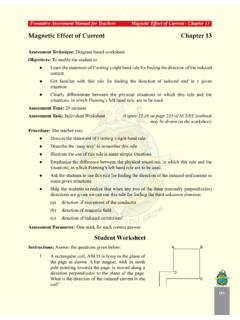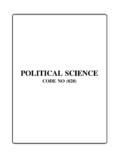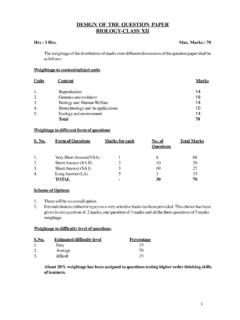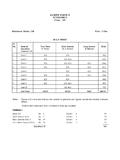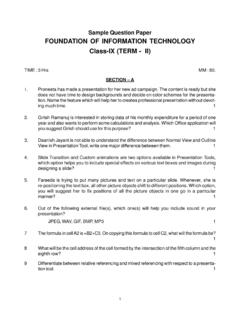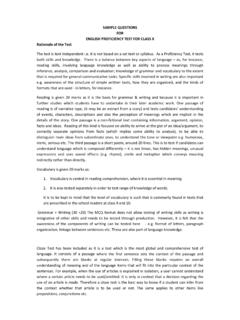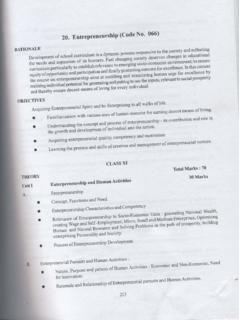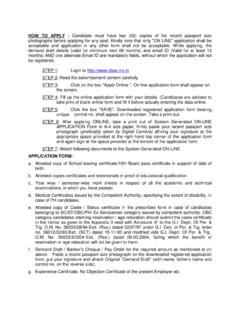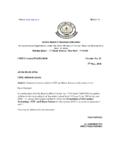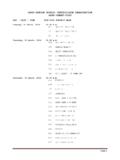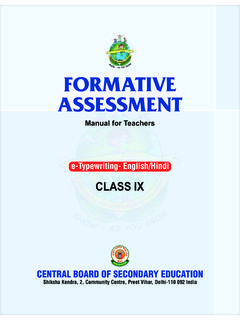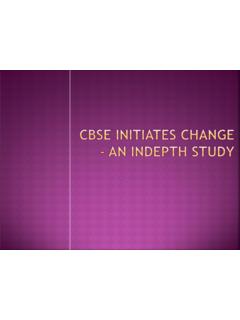Transcription of TEACHERS’ MANUAL ON FORMATIVE …
1 TEACHERS MANUALONFORMATIVE ASSESSMENTSCIENCECLASS IXCENTRAL BOARD OF SECONDARY EDUCATIONSh i kS h a ke n d r a, 2, Co m m u n i t y Ce n t r e, Pr e e t Vi h a r, de l h i-110 092 in d i aTeachers MANUAL on FORMATIVE assessment in Science class IXPRICE : EDITION 2010 cbse , Delhi, IndiaCOPIES:This book or part there of may not be reproduced by any person or agency in any mannerPUBLISHED BY : The Secretary, Central Board of Secondary Education, Shiksha Kendra, 2, Community Centre, Preet Vihar, Delhi-110092 DESIGN, LAYOUT : Chandu Press, D-97, Shakarpur, New Delhi-110092, Phone : PRINTED BY : Hkkx 4 dewy d kZO;51 d- ewy d kZO; & Hkkjr ds izR;sd ukxfjd dk ;g d kZO; gksxk fd og &(d) lafo/ku dk ikyu djs vkSj mlds vkn'kks ] laLFkkvksa] jk"V ot vkSj jk"V xku dk vknj djs_([k) Lora=krk ds fy, gekjs jk"V h; vkanksyu dks izsfjr djus okys mPp vkn'kks dks n; esa latks, j[ks vkSj mudk ikyu djs_(x) Hkkjr dh izHkqrk] ,drk vkSj v[kaMrk dh j{kk djs vkSj mls v{ j[ks_(?)]}}
2 K) ns'k dh j{kk djs vkSj vkg~oku fd, tkus ij jk"V dh lsok djs_( ) Hkkjr ds lHkh yksxksa esa lejlrk vkSj leku Hkzkr`Ro dh Hkkouk dk djs tks /eZ] Hkk"kk vkSj izns'k ;k oxZ ij vk/kfjr lHkh HksnHkko ls ijs gksa] ,slh izFkkvksa dk R;kx djs tks fL=k;ksa ds lEeku ds fo# gSa_(p) gekjh lkekfld laL fr dh xkSjo'kkyh ijaijk dk eg o le>s vkSj mldk ijh{ djs_(N) izk frd i; dh ftlds varxZr ou] >hy] unh] vkSj oU; tho gSa] j{kk djs vkSj mldk lao/Zu djs rFkk ds izfr n;kHkko j[ks_(t) oSKkfud n`f" ] ekuookn vkSj KkuktZu rFkk lq/kj dh Hkkouk dk fodkl djs_(>) lkoZtfud laif k dks lqjf{kr j[ks vkSj fgalk ls nwj jgs_( k) O;fDrxr vkSj lkewfgd xfrfof/;ksa ds lHkh {ks=kksa esa mRd"kZ dh vksj c<+us dk lrr iz;kl djs ftlls jk"V fujarj c<+rs gq, iz;Ru vkSj miyfC/ dh ubZ mapkb;ksa dks Nw ysAHkkjr dk lafo/kum sf'kdkge] Hkkjr ds yksx] Hkkjr dks ,d ^ izHkqRo&laiUu lektoknh iaFkfujis{k yksdra=kkRed ; cukus ds fy,] rFkk mlds leLr ukxfjdksa dks%lkekftd] vkfFkZd vkSj jktuSfrd U;k;] fopkj] vfHkO;fDr] fo'okl] /eZ vkSj mikluk dh Lora=krk] izfr"Bk vkSj volj dh lerk izkIr djkus ds fy,] rFkk mu lc esa] O;fDr dh xfjek vkSj jk"V dh ,drk vkSj v[ lqfuf'pr djus okyh ca/qrk c<+kus ds fy, n`<+ladYi gksdj viuh bl lafo/ku lHkk esa vkt rkjh[k 26 uoEcj] 1949 bZ dks ,rn~}kjk bl lafo/ku dks vaxh r] vf/fu;fer vkSj vkRekfiZr djrs gSaA1- lafo/ku (c;kyhloka la'kks/u) vf/fu;e] 1976 dh /kjk 2 }kjk (3-1-1977) ls izHkqRo&laiUu yksdra=kkRed ; ds LFkku ij izfrLFkkfir A2- lafo/ku (c;kyhloka la'kks/u) vf/fu.}}}}
3 E] 1976 dh /kjk 2 }kjk (3-1-1977 ls)] jk"V dh ,drk ds LFkku ij izfrLFkkfir ATHE CONSTITUTION OF INDIAPREAMBLE WE, THE PEOPLE OF INDIA, having solemnly resolved to constitute India into a SOVEREIGN SOCIALIST SECULAR DEMOCRATIC REPUBLIC and to secure to all its citizens : JUSTICE, social, economic and political; LIBERTY of thought, expression, belief, faith and worship; EQUALITY of status and of opportunity; and to promote among them all FRATERNITY assuring the dignity of the individual and the [unity and integrity of the Nation];IN OUR CONSTITUENT ASSEMBLY this twenty-sixth day of November, 1949, do HEREBY TO OURSELVES THIS Subs, by the Constitution (Forty-Second Amendment) Act. 1976, sec. 2, for Sovereign Democratic Republic ( )2. Subs, by the Constitution (Forty-Second Amendment) Act.
4 1976, sec. 2, for unity of the Nation ( )THE CONSTITUTION OF INDIAC hapter IV AFundamental DutiesARTICLE 51 AFundamental Duties -It shall be the duty of every citizen of India(a) to abide by the Constitution and respect its ideals and institutions, the National Flag and the National Anthem; (b) to cherish and follow the noble ideals which inspired our national struggle for freedom;(c) to uphold and protect the sovereignty, unity and integrity of India; (d) to defend the country and render national service when called upon to do so; (e) To promote harmony and the spirit of common brotherhood amongst all the people of India transcending religious, linguistic and regional or sectional diversities; to renounce practices derogatory to the dignity of women;(f) to value and preserve the rich heritage of our composite culture;(g) to protect and improve the natural environment including forests, lakes, rivers, wild life and to have compassion for living creatures;(h) to develop the scientific temper, humanism and the spirit of inquiry and reform;(i) to safeguard public property and to abjure violence;(j) to strive towards excellence in all spheres of individual and collective activity so CONTENTS Acknowledgements Preface Continuous Comprehensive Evaluation School Based Continuous & Comprehensive Evaluation and FORMATIVE assessment Page Matter in our Surroundings 1 Chapter-2 Is Matter Around us pure ?
5 17 Chapter-3 Atoms and Molecules 29 Chapter-4 Structure of the Atom 39 Chapter-5 The Fundamental Unit of Life 45 Chapter-6 Tissues 51 Chapter-7 Diversity in Living Organism 56 Chapter-8 Motion 67 Chapter-9 Force and Laws of Motion 79 Chapter-10 Gravitation 83 Chapter-11 Work and Energy 88 Chapter-12 Sound 90 Chapter-13 Why do we fall ill ? 102 Chapter-14 Natural Resources 110 Chapter-15 Improvement in Food Resources 116 ADVISORY Shri Vineet Joshi, Chairman cbse Smt. Chitralekha Gurumurthy, Director Academic Dr. Sadhana Parashar, Head (Innovation & Research)EDITING Dr. Bharati Sarkar Ms. Monika Mehan Vijay Sarda Mr. SharmaMATERIAL PRODUCTION Dr. Sehgal Ms. Monika Mehan Ms. Charu Maini Ms. Neelma Puri Ms. Vidhu Narayanan Ms. Suman Nath Ms. Madhu Mehta Ms. Shyamala Srivastava Ms.
6 Soma SinghSubject Co-ordination Mr. Sharma, Consultant, cbse Mr. Jena, Asstt. Education Officer, CBSEA cknowledgementsiAt the centre of the transformation that School Education is undergoing presently is the new perspective to assessment and its relationship to the teaching-learning process. It is widely agreed that assessment influences what is taught and how teaching and learning are delivered. There is also a widespread belief among educational researchers and practitioners that assessment can and often does constrain rather than enhance learning outcomes. If we restrict our choices of teaching and learning activities to exercises that simply rehearse for examinations, then we run the risk of failing our learners during the teaching and learning process as a whole.
7 Another pitfall in working towards assessment is that learners may concentrate simply on doing the bare minimum needed in order to guarantee a pass. Hence the challenge of changing the traditional system of examination and evaluation has emerged as a major focus. By introducing Continuous and Comprehensive Evaluation at the secondary level in all its affiliated schools, cbse has sent out a clear message that assessment must take into account all the aspects of the personality development of the learner and that since learning is a continuous process, assessment also has to be continuous. CCE fundamentally shifts the focus from testing to learning by perceiving assessment as an integral part of the overall framework of teaching and learning. It follows from this that when incorporated into classroom practice, assessment tends to lose its individual identity, getting subsumed into the instructional a conceptualization necessitates a greater thrust on FORMATIVE assessment .
8 It must be said, at this stage, that though many schools have been practicing CCE and as a consequence, FORMATIVE assessment procedures for classes I-VIII for many years, the overall thrust still continues assessment for measuring rather than enhancing learning. In other words, there has been a general lack of conceptual clarity with regard to the FORMATIVE assessment practices among stakeholders as a result of which, many apparently FORMATIVE assessment tools and procedures have, in effect, been summative in nature, ie, exercises to gauge, at a particular point in time, student learning relative to content standards. Although the information gleaned from this type of assessment is important, it can only help in evaluating certain aspects of the learning brings us to the vital need of strengthening FORMATIVE assessment because our overall aim is to facilitate learning by improving the teaching-learning process on the basis of information gathered from this sense FORMATIVE assessment is a part of the instructional process, underpinning the importance of student involvement.
9 Students need to be involved both as assessors of their own learning and as resources to other students bringing into focus the importance of self and peer assessment besides teacher assessment . Research shows that the involvement in and ownership of their work increases students motivation to learn. The most significant advantage of FORMATIVE assessment is that it makes learning an enjoyable experience because of student involvement, enhanced learning and unobtrusive techniques of assessment constitutes a public recognition of achievement and we are fairly familiar with most of the tools and procedures of summative assessment . However, many teachers may find it a challenge to develop effective FORMATIVE assessment tools; they may also experience some difficulties in integrating them with classroom instruction.
10 In order to provide conceptual clarity in this regard and to place some illustrative examples of FORMATIVE assessment tasks in the hands of the teachers, the Board is bringing out a series of Manuals for classes IX and X in all the major subjects. This MANUAL in Science for class IX is one of them. The tasks exemplified in this MANUAL are of different types such as Role Plays, Crossword Puzzle, Flow Charts, Popular Science, Book Review, Field Trips, class Work/Home Work Assignments, Group Work, Survey, Project Work, Worksheets, Games and Multiple Choice Questions. The tasks provided are varied and cater to the different multiple is fervently hoped that teachers and students will derive maximum benefit from these publications. By studying the contents carefully and by using the tasks in classroom teaching, teachers would be able to build their capacity not only for enhanced learning to take place but also for preparing their own materials to add value to curriculum delivery.
